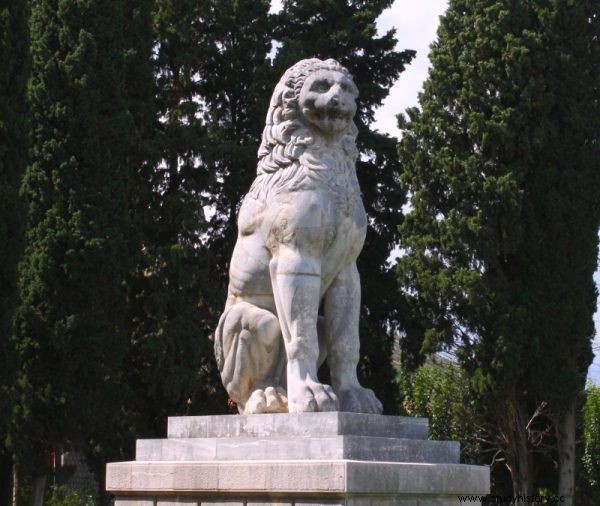Only the best of the best went to this elite unit. Conditions? Above average strength, bravery, courage and ... homosexual orientation. The Thebans, fighting side by side with their lovers, were deadly. They even beat the famous Spartans ...
Athens and Sparta are different countries and life models. In both there were various relationships between the warriors. But not only there. Xenophon wrote the story of the brave Epistenes of Olint fighting at the head of a squad of beautiful men and ready to die for a young boy. However, among the advocates of male-male relationships on the battlefield, the most famous were the conquerors of the Spartans in the 4th century BC:Thebans.
Life and death
One of their commanders, Gorgides, decided that no one would fight more selflessly than one who fought for his life and that of the person he loves. He listened to philosophers, but also his comrades-in-arms - the Thebanian Pammenes stated that Homer's Nestor must have had no knowledge of tactics, since he divided the Greek troops according to tribal and ancestral affiliation, instead of arranging them so that eromenos would fight side by side with erastes.
That's why Gorgides came up with the idea of creating the Holy Host - a hoplite unit of warrior lovers . Out of one hundred and fifty pairs of well-born Thebans committed to death and life. There were three hundred of them, not because of some sentiment to the exploits of the Spartans Leonidas, but simply because that many military men were usually made up of selected units of Greek city-states.

A statue of a lion under which the remains of 254 warriors of the Holy Host are buried.
Organizationally and tactically, two Theban leaders - Pelopidas and Epaminondas - strengthened the Holy Host. The latter introduced the so-called diagonal formation, thanks to which the Thebans achieved the famous victory over the Spartan army at Leuktra in 371 BCE After him, Sparta in principle never regained its former prestige and power, and certainly the Spartans were no longer considered invincible.
The example goes from above
Epaminondas and Pelopidas appreciated the relationship of lovers in the Holy Host, because they themselves, according to the common opinion, were a pederastic couple in their time. When they were mere hoplites, one saved the other's life at the Battle of Mantineja.
Seven times wounded, Pelopidas fell, but his younger friend - though also wounded - managed to save him. Such things on the battlefield were not uncommon (for example, Socrates was supposed to save Xenophon during the Battle of Delion), testified to bravery and courage, not necessarily to an emotional bond. It is interesting, however, that Epaminondas did not have time to get married: the question is whether it is a matter of a busy schedule, lifestyle or maybe different preferences .
Couples from the Holy Host functioned on the typical Greek principle of eromenos and erastes, although the men entering into these relationships differed in age from the Athenian couples. After the age of eighteen, Luby received armor from his lover. Young men at the age of twenty were admitted to the Host, and the eldest ended their service about thirty.
We know two eromenos of Epaminondas:Asopichos, who became famous in the battles with the Spartans, and Kafiodorus, who fell with the chief in 362 BCE.
Greek capital of homosexuals
There are historians who seriously doubt whether the merits of the Holy Host are exaggerated, and even whether it actually existed in the form described. Nevertheless, T that they would actually (along with Elida in the west of the Peloponnesian Peninsula) be considered poleis most conducive to pederasty where erastes and eromenos treated each other as if they were married.
Examples were the aristocrat Filolaos of Corinth and the Athenian Olympic winner in the 728 BCE race. named Diocles who lived there together for years. It is possible that they chose Thebes because they were - as we would say today - "gay friendly". When they died, they were buried next to each other. At the tomb of Diocles, the Thebans then held a kissing competition for boys "who presses his lips to his mouth most tenderly", as Theocritus wrote (4th-3rd centuries BCE).
Let us add that over another local grave - the mythical hero Jolaos, a friend of Heracles - their beloved swore allegiance, including the warriors from the Holy Host. A few hundred years after its liquidation, Cicero compared the Thebans and Eleans who had no sexual inhibitions with the more modest Spartans .
And what brought an end to the Holy Host? The Battle of Cheronea in 338 BCE, when Macedonian troops crushed the combined forces of Greek cities opposing its domination. The host was killed. The skeletons of 254 men were later discovered under the lion statue in honor of the defeated warrior lovers.
Source:
The above text originally appeared in Adam Węgłowski's book The Age of Shamelessness. Sex and erotica in antiquity , which was published by the publishing house CiekawostkiHistoryczne.pl.
The title, illustrations with captions, boldface text, explanations in square brackets and subheadings come from the editors. The text has undergone some basic editing to introduce more frequent paragraph breaks.
